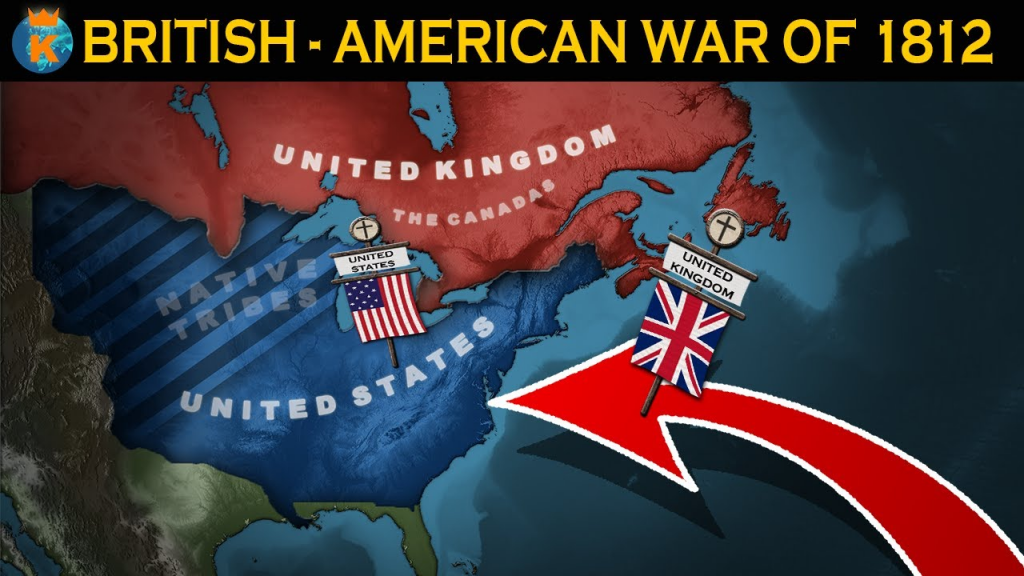When people think of the War of 1812, they often view it as a minor conflict between the United States and Great Britain, overshadowed by the larger Napoleonic Wars raging in Europe. However, for one country, this war was nothing short of a defining moment—Canada.
Many assume that Canadian history is simply a story of watching the United States grow and being passively influenced by it. But Canada was never just a bystander; it actively shaped its own destiny. If we were to rank the most impactful events in Canadian history, the top three would be: the Confederation of 1867, the completion of the Canadian Pacific Railway in 1885, and, surprisingly to some, the War of 1812. This war gave Canada its first chance to shine on the world stage, awakening a young and uncertain people to the reality of their nationhood.

America’s Troublesome Neighbor
Having the United States as a neighbor is like having an overzealous roommate who always wants to “fix” your life, whether you need it or not. In the early 19th century, the U.S. didn’t necessarily dislike Canada; they just couldn’t stand the British. Since Canada was a British colony, it naturally became the most convenient punching bag. America saw itself as a beacon of liberty, believing Canadians were suffering under British rule and needed “liberation.” Of course, this also came with the added bonus of territorial expansion. With this mix of self-righteousness and ambition, the U.S. decided to invade Canada.
The Odds Were Stacked—Against America
On paper, the U.S. had the clear advantage. With a population of 7.5 million compared to Canada’s mere 400,000, it seemed like an easy win. The British army in Canada was outnumbered, with only around 6,000 soldiers, while the U.S. could summon tens of thousands of troops, including state militias. Moreover, Britain was busy fighting Napoleon in Europe, leaving Canada seemingly defenseless.
American leaders like President James Madison and Secretary of State James Monroe were confident. House Speaker Henry Clay even boasted that “the militia of Kentucky alone can conquer Upper Canada.” It was supposed to be a quick and effortless victory. But reality had other plans.
The Cracks in the American War Machine
Despite their numerical superiority, the Americans faced serious problems. First, their army was mostly untrained militia, while British troops were battle-hardened professionals. Second, state militias were notoriously unreliable, often refusing to leave their home states, let alone cross an international border. Third, America was financially unstable due to years of economic policies that had drained its treasury. Without a national bank, funding the war was a logistical nightmare.
To make matters worse, the New England states—Massachusetts, Connecticut, Rhode Island, and New Hampshire—opposed the war entirely. Their economies depended on trade with Britain, and they had no interest in fighting. Some even continued trading with the British during the war, supplying them with food and goods. This internal division further weakened the American war effort.
The Three-Pronged Invasion Plan—and Its Rapid Collapse
With misguided confidence, the U.S. planned a three-pronged invasion:
- One force would attack from Detroit into Upper Canada.
- Another would advance westward between Lake Erie and Lake Ontario.
- A third would strike from New England into Lower Canada, aiming for Montreal.
This strategy had three fatal flaws:
- It required perfect coordination across vast distances, but there were no reliable communication lines.
- The success of each force depended on bold and decisive leadership, but American generals were hesitant and cautious.
- Splitting the army into three weakened their overall strength, making them vulnerable.
The first American campaign, led by General William Hull, was a complete disaster. Hull, once a respected officer, had become old and indecisive. Instead of launching an aggressive attack, he hesitated, fearing British and Native American resistance. His opponent, British General Isaac Brock, was everything Hull was not—young, bold, and brilliant. Brock played psychological warfare perfectly, making his tiny force appear much larger than it was. When Brock and his Native allies, led by the legendary Tecumseh, surrounded Detroit in August 1812, Hull panicked and surrendered without firing a single shot. It was the only time in history that an American city surrendered to a foreign army without a fight.
The Battle of Queenston Heights—and the Death of a Canadian Hero
The second invasion attempt in October 1812 also ended in humiliation. American forces crossed the Niagara River to attack Queenston Heights but were met by Brock and his troops. Initially, the Americans gained ground, but the tide turned when Native reinforcements arrived, striking fear into the American ranks. Adding to their misfortune, New York state militias refused to cross into Canada, leaving their comrades stranded. Despite their victory, Canada suffered a tragic loss—General Brock was killed in battle. However, his legacy as a national hero was forever cemented.
The War’s Lasting Impact on Canada
The War of 1812 proved that Canada was not just a helpless British outpost but a land capable of defending itself. It forged a sense of unity among the diverse peoples of Canada—British loyalists, French Canadians, and Indigenous nations—who fought side by side against a common enemy. The war also reinforced Canada’s identity as separate from the United States, setting the stage for the Confederation in 1867.
For the U.S., the war ended in a stalemate, with neither side gaining or losing territory. However, it did help solidify American national pride, thanks to famous battles like the defense of Baltimore (which inspired “The Star-Spangled Banner”) and Andrew Jackson’s victory in New Orleans. But for Canada, the war was more than just a military conflict—it was the birth of a national consciousness.
So, the next time someone tells you that Canada has a boring history, remind them of 1812. It was the year Canada stood up, fought back, and proved it was here to stay.

No comments yet.